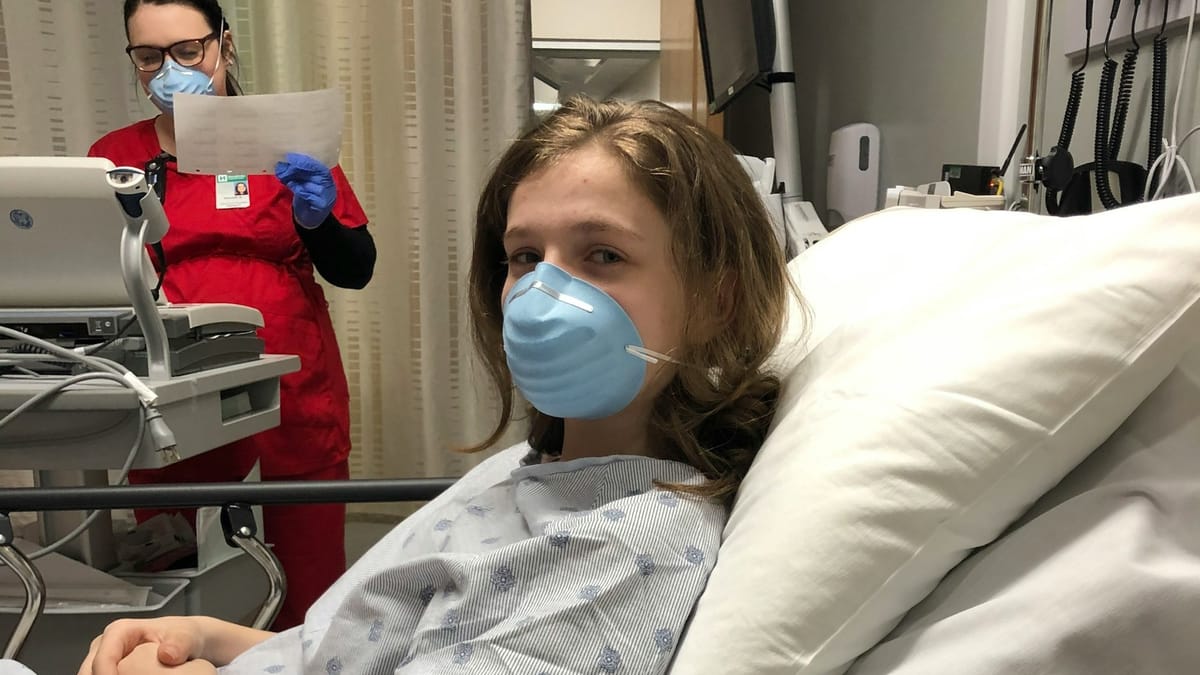Bird Flu Breakthrough: H5N1 Insights You Can't Ignore

Bird flu viruses, also known as avian influenza viruses, are a type of influenza virus that primarily infect birds but can sometimes spread to humans and other animals. Understanding bird flu viruses is crucial because they pose a significant threat to global health, agriculture, and food security. This blog post will focus on the H5N1 subtype of bird flu virus, which has caused numerous outbreaks and pandemics in birds and humans.
What are Bird Flu Viruses?
Bird flu viruses are a type of influenza A virus that primarily infect birds but can also infect humans and other animals. There are several subtypes of bird flu viruses, including H5N1, H7N9, and H9N2. These viruses are transmitted and spread through direct or indirect contact with infected birds or their feces, contaminated surfaces, or environments. They are also known as avian influenza viruses, are a type of influenza A virus that primarily infect birds but can also infect humans and other animals. These viruses are part of the Orthomyxoviridae family and are classified based on the structure of their hemagglutinin (HA) and neuraminidase (NA) proteins. The HA protein is responsible for binding to host cells, while the NA protein helps release newly formed virus particles from infected cells.
There are several subtypes of bird flu viruses, including H5N1, H7N9, H9N2, and others. Each subtype has a unique combination of HA and NA proteins, which determines its ability to infect different species and cause disease. H5N1, for example, is a highly pathogenic avian influenza virus that has caused numerous outbreaks and pandemics in birds and humans. H7N9, on the other hand, is a low pathogenic avian influenza virus that primarily infects birds but can occasionally infect humans and cause severe respiratory symptoms. Bird flu viruses are transmitted and spread through direct or indirect contact with infected birds or their faeces, contaminated surfaces, or environments. Direct contact involves physical contact with infected birds or their faeces, while indirect contact involves exposure to contaminated surfaces or environments. Bird flu viruses can survive for several days in the environment, particularly in cold and humid conditions, which increases their potential for transmission and spread.
This viruses can infect a wide range of bird species, including domestic poultry, wild birds, and migratory birds. Domestic poultry, such as chickens, ducks, and turkeys, are particularly susceptible to bird flu viruses and can serve as a source of infection for humans and other animals. Wild birds, such as waterfowl and shorebirds, can also carry and transmit bird flu viruses, particularly during their migratory movements. They can also infect humans and other animals, such as pigs, horses, and dogs. In humans, bird flu viruses can cause severe respiratory symptoms, pneumonia, and even death. However, human cases of bird flu are relatively rare and typically occur in individuals who have close contact with infected birds or their faeces. In animals, bird flu viruses can cause a range of symptoms, from mild respiratory illness to severe disease and death.
The transmission and spread of bird flu viruses are influenced by several factors, including the type of virus, the host species, and the environment. Highly pathogenic avian influenza viruses, such as H5N1, are more likely to cause severe disease and death in birds and humans, while low pathogenic avian influenza viruses, such as H7N9, are more likely to cause mild or asymptomatic infections. The host species also plays a role in the transmission and spread of bird flu viruses, as some species, such as domestic poultry, are more susceptible to infection and can serve as a source of infection for humans and other animals.
Environmental factors, such as temperature, humidity, and seasonality, can also affect the transmission and spread of bird flu viruses. Cold and humid conditions, for example, can increase the survival and transmission of bird flu viruses in the environment, while warm and dry conditions can decrease their transmission and spread. Seasonality, particularly the migratory movements of wild birds, can also affect the transmission and spread of bird flu viruses, as migratory birds can carry and transmit the viruses over long distances.
H5N1 Bird Flu: A High-Risk Virus
H5N1 bird flu virus, scientifically known as Influenza A virus subtype H5N1, stands out as a highly pathogenic avian influenza virus that has garnered significant attention due to its potential to cause severe outbreaks and pandemics in both avian and human populations. This particular strain of the influenza virus gained notoriety after its initial identification in 1996 among domestic waterfowl in Southern China. Since its emergence, H5N1 has demonstrated a remarkable ability to spread across borders and continents, affecting countries in Asia, Europe, Africa, and the Americas, highlighting the global nature of the threat it poses.
The impact of H5N1 on both bird and human populations cannot be understated. This virus has been associated with devastating outbreaks in poultry, leading to significant economic losses in the agricultural sector. The high mortality rate observed in birds infected with H5N1 underscores the severity of the disease in avian species, with mortality rates often exceeding 50% in affected flocks. Beyond its impact on birds, H5N1 has also proven to be a formidable threat to human health.
In humans, H5N1 infections have been characterized by severe respiratory symptoms and pneumonia, often resulting in acute respiratory distress syndrome (ARDS) and, in some cases, death. The ability of H5N1 to cause severe disease in humans has raised concerns about the potential for a global pandemic, prompting extensive research and surveillance efforts to monitor and mitigate the spread of the virus. The zoonotic nature of H5N1, with the ability to jump from birds to humans, further complicates efforts to control its transmission and prevent outbreaks.
The global health community recognizes the importance of understanding and addressing the risks associated with H5N1 bird flu virus. Efforts to enhance surveillance, improve biosecurity measures, develop effective vaccines, and strengthen public health preparedness are essential components of the strategy to combat the threat posed by H5N1 and other emerging infectious diseases. By gaining a deeper understanding of the biology, transmission dynamics, and pathogenicity of H5N1, researchers and public health authorities can better anticipate and respond to future outbreaks, ultimately safeguarding both animal and human populations from the devastating impact of this high-risk virus.
Transmission and Spread of H5N1
H5N1 bird flu virus is highly contagious and can be transmitted and spread through various modes of transmission. The virus is primarily transmitted through direct or indirect contact with infected birds or their feces, contaminated surfaces, or environments. This means that people who come into contact with infected birds or their feces, such as poultry workers, farmers, or those who handle infected birds in live bird markets, are at a higher risk of contracting the virus.
Migratory birds play a significant role in the spread of H5N1, as they can carry the virus over long distances and transmit it to domestic poultry and other bird and animal species. Migratory birds are known to travel thousands of miles each year, and they often come into contact with domestic poultry and other birds during their migration. This can lead to the spread of the virus to new areas and the transmission of the virus to domestic poultry and other bird and animal species. In addition to migratory birds, animal trade and human activities can also contribute to the spread of H5N1. The global trade in live birds and poultry products can facilitate the spread of the virus across borders and continents. The transportation of infected birds or poultry products can lead to the introduction of the virus into new areas, where it can infect domestic poultry and other bird and animal species.
Human activities, such as plucking and handling infected poultry carcasses, can also contribute to the spread of H5N1. These activities can lead to the exposure of people to the virus, which can result in the transmission of the virus to humans. In addition, the consumption of undercooked or raw poultry products, such as chicken or duck, can also lead to the transmission of the virus to humans. The potential for pandemic spread of H5N1 is a major concern for global health. The virus has the potential to mutate and adapt to human hosts, which could lead to the development of a highly transmissible and deadly strain of the virus. This could result in a pandemic, which could have significant consequences for global health, agriculture, and food security.
To prevent the spread of H5N1, it is important to implement effective prevention and control measures. These measures include biosecurity and hygiene practices, such as hand washing, wearing protective clothing, and disinfecting contaminated surfaces. It is also important to monitor and report outbreaks of H5N1 in birds and humans, and to share information and resources to coordinate responses.
Symptoms and Diagnosis of H5N1
When H5N1 is transmitted to humans, symptoms can range from mild upper respiratory tract infection to severe pneumonia, acute respiratory distress syndrome, shock, and even death. The incubation period for H5N1 in humans is usually 2-5 days, but it can be as short as 24 hours or as long as 17 days.
The early symptoms of H5N1 in humans are similar to those of other respiratory infections, such as fever, cough, sore throat, and muscle aches. However, as the infection progresses, symptoms can become more severe and include difficulty breathing, pneumonia, acute respiratory distress syndrome, sepsis, and multi-organ failure. In severe cases, H5N1 can cause severe respiratory distress, which can lead to respiratory failure and death.
Diagnosis of H5N1 is typically made through laboratory tests, such as reverse transcription-polymerase chain reaction (RT-PCR) or viral culture. RT-PCR is a highly sensitive and specific test that can detect the genetic material of the virus in respiratory samples, such as nasal swabs, throat swabs, or sputum. Viral culture is a more time-consuming test that involves growing the virus in cell culture. Other laboratory tests that can be used to diagnose H5N1 include serology, which involves detecting antibodies to the virus in blood samples, and antigen detection tests, which involve detecting the presence of viral proteins in respiratory samples.
Clinical diagnosis of H5N1 can be challenging due to the nonspecific nature of the symptoms and the lack of availability of laboratory tests in some settings. In cases where H5N1 is suspected, clinicians should immediately report the case to public health authorities and initiate appropriate infection control measures.
The World Health Organization (WHO) recommends a case definition for H5N1 that includes the following criteria:
- Acute respiratory illness with fever (temperature greater than 38°C) and cough, and
- Radiographic evidence of pneumonia or acute respiratory distress syndrome, and
- Laboratory confirmation of H5N1 infection by RT-PCR, viral culture, or serology.
In addition to laboratory tests, imaging studies, such as chest X-rays or computed tomography (CT) scans, can be helpful in diagnosing H5N1. Chest X-rays may show signs of pneumonia, such as infiltrates or consolidation, while CT scans can provide more detailed images of the lungs.
Early diagnosis and treatment of H5N1 are critical for improving outcomes and reducing the risk of transmission. Antiviral medications, such as oseltamivir (Tamiflu) or zanamivir (Relenza), can be effective in treating H5N1 if started within 48 hours of symptom onset. However, H5N1 has shown resistance to some antiviral medications, and treatment may require the use of other medications or combinations of medications.
Prevention and Control Measures
Prevention and control measures for H5N1 are crucial to prevent and control outbreaks and pandemics in birds and humans. These measures include vaccination, biosecurity and hygiene practices, and global surveillance and response efforts.
Vaccination is a critical tool for preventing and controlling H5N1 in birds and humans. Vaccines for H5N1 have been developed and used in birds and humans to prevent and control the virus. In birds, vaccination can help prevent the spread of the virus and reduce the risk of outbreaks. In humans, vaccines can help protect against infection and reduce the severity of symptoms. However, vaccination alone is not sufficient to prevent and control H5N1. Biosecurity and hygiene practices are also essential for preventing the spread of the virus. Biosecurity measures include preventing the introduction of infected birds into flocks, separating infected birds from healthy birds, and using personal protective equipment, such as gloves, masks, and protective clothing. Hygiene practices include hand washing, disinfecting contaminated surfaces, and avoiding contact with infected birds or their feces.
Global surveillance and response efforts are also crucial for preventing and controlling H5N1 pandemics. These efforts include monitoring and reporting outbreaks, sharing information and resources, and coordinating responses. Monitoring and reporting outbreaks are critical for detecting and responding to H5N1 outbreaks. Countries are encouraged to report any suspected or confirmed cases of H5N1 to the World Health Organization (WHO) and the Food and Agriculture Organization of the United Nations (FAO). This information is used to track the spread of the virus and to coordinate responses.
Sharing information and resources is also essential for preventing and controlling H5N1 pandemics. The WHO, FAO, and the World Organization for Animal Health (OIE) work together to share information and resources on H5N1. This includes sharing data on the genetic sequences of the virus, diagnostic tools, and vaccines.
Coordinating responses is also critical for preventing and controlling H5N1 pandemics. The WHO, FAO, and OIE work together to coordinate responses to H5N1 outbreaks. This includes developing and implementing control strategies, such as culling infected birds, vaccinating healthy birds, and improving biosecurity and hygiene practices. In addition to these efforts, research and development of new vaccines, diagnostic tools, and treatments are ongoing. These efforts are essential for improving our ability to prevent and control H5N1 outbreaks and pandemics.
Conclusion
In conclusion, the intricate understanding of bird flu viruses, with a specific focus on the H5N1 subtype, stands as a pivotal cornerstone in the prevention and control of potential outbreaks and pandemics affecting both avian species and humans. The gravity of the situation is underscored by the substantial morbidity and mortality rates associated with H5N1 infections, emphasising the urgent need for comprehensive strategies to combat its spread.
While existing prevention and control measures have shown efficacy in mitigating the impact of H5N1 outbreaks, continuous advancements in research and unwavering commitment to public health preparedness are imperative in fortifying our defences against the persistent threat posed by bird flu viruses. Collaborative efforts across scientific, governmental, and international sectors are essential to enhance surveillance, develop innovative vaccination strategies, and bolster global response mechanisms.
Investing in interdisciplinary research, fostering international cooperation, and prioritising early detection and rapid containment protocols are vital components in the ongoing battle against avian influenza. By remaining vigilant, proactive, and adaptive in our approach, we can strive towards a future where the devastating consequences of bird flu viruses, particularly H5N1, are minimised, and global health security is safeguarded for generations to come.
Key Takeaways:
- Bird flu viruses, or avian influenza viruses, are a type of influenza A virus that primarily infect birds but can also infect humans and other animals. They are classified based on the structure of their hemagglutinin (HA) and neuraminidase (NA) proteins.
- There are several subtypes of bird flu viruses, including H5N1, H7N9, and H9N2. Each subtype has a unique combination of HA and NA proteins, which determines its ability to infect different species and cause disease.
- Bird flu viruses are transmitted and spread through direct or indirect contact with infected birds or their feces, contaminated surfaces, or environments. They can survive for several days in the environment, particularly in cold and humid conditions.
- Bird flu viruses can infect a wide range of bird species, including domestic poultry, wild birds, and migratory birds. Domestic poultry, such as chickens, ducks, and turkeys, are particularly susceptible to bird flu viruses and can serve as a source of infection for humans and other animals.
- H5N1 bird flu virus is a highly pathogenic avian influenza virus that has caused numerous outbreaks and pandemics in birds and humans. It has a high mortality rate in birds and can cause severe respiratory symptoms, pneumonia, and even death in humans.
- Transmission and spread of bird flu viruses are influenced by several factors, including the type of virus, the host species, and the environment. Highly pathogenic avian influenza viruses, such as H5N1, are more likely to cause severe disease and death in birds and humans.
- Migratory birds play a significant role in the spread of H5N1, as they can carry the virus over long distances and transmit it to domestic poultry and other bird and animal species. Animal trade and human activities can also contribute to the spread of H5N1.
- Symptoms of H5N1 in humans can range from mild upper respiratory tract infection to severe pneumonia, acute respiratory distress syndrome, shock, and even death. Early diagnosis and treatment with antiviral medications are critical for improving outcomes and reducing the risk of transmission.
- Prevention and control measures for H5N1 include vaccination, biosecurity and hygiene practices, and global surveillance and response efforts. Vaccination is a critical tool for preventing and controlling H5N1 in birds and humans.
- The WHO, FAO, and OIE work together to coordinate responses to H5N1 outbreaks, share information and resources, and develop and implement control strategies. Research and development of new vaccines, diagnostic tools, and treatments are ongoing to improve our ability to prevent and control H5N1 outbreaks and pandemics.
Thank you for reading this post!
If you found it helpful or informative, please consider sharing a 7 day free trial with your friends, family, or colleagues who might benefit from it.
Your support helps me reach more people and spread awareness on important topics like this. Together, we can make a difference!
References
https://www.cdc.gov/flu/avianflu/communication-resources/bird-flu-origin-infographic.html
https://www.ncbi.nlm.nih.gov/pmc/articles/PMC7135818/
https://www.paho.org/en/topics/avian-influenza
https://my.clevelandclinic.org/health/diseases/22401-bird-flu
https://www.cdc.gov/flu/avianflu/communication-resources/bird-flu-origin-infographic.html
https://www.ncbi.nlm.nih.gov/pmc/articles/PMC7135818/
https://www.paho.org/en/topics/avian-influenza
https://my.clevelandclinic.org/health/diseases/22401-bird-flu




